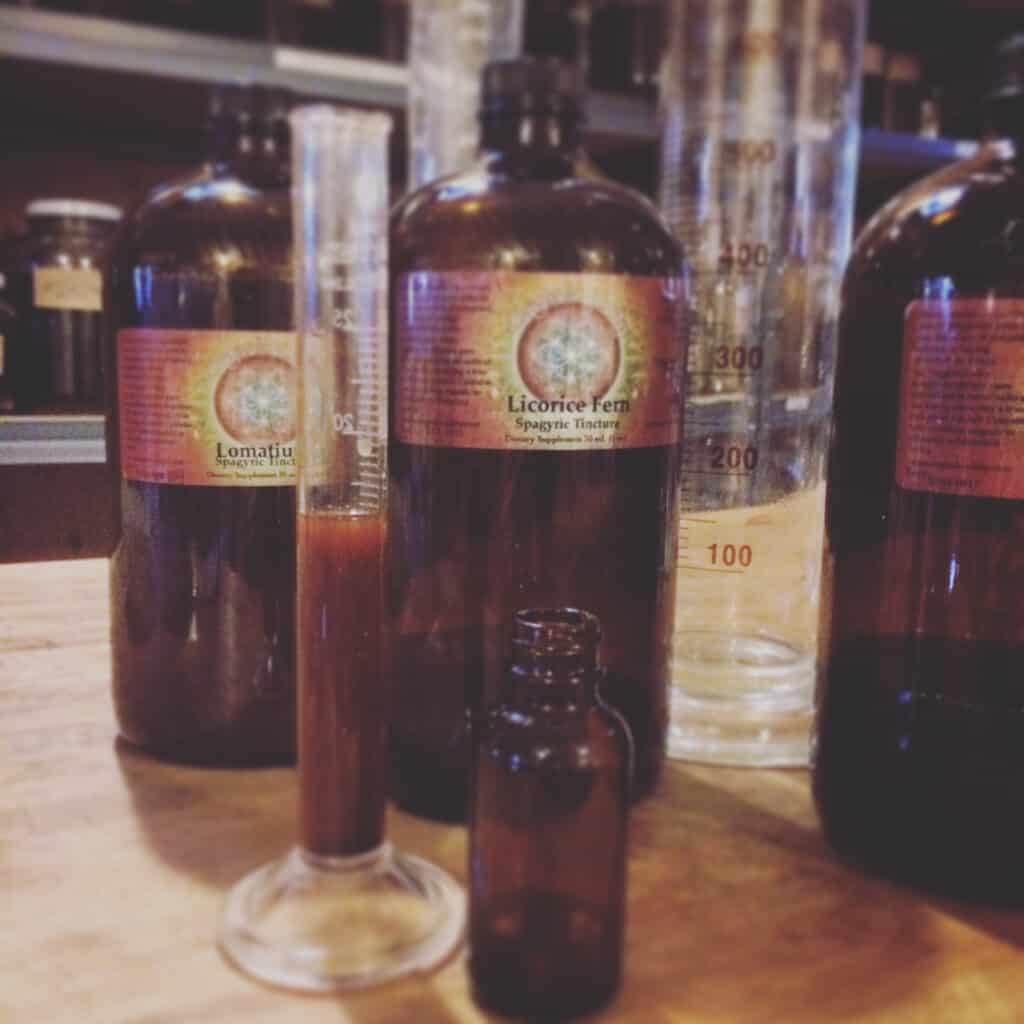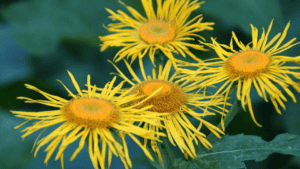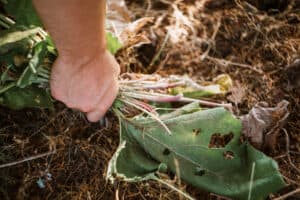One of the most important skills for the modern clinical herbalist is having the ability to successfully treat the digestive system. This is one of the most critical organ systems to understand how to treat holistically from the vitalist perspective of herbalism.
Traditions of herbalism understand the human organism and plants, not just through the lens of science and chemistry, but through the perspective of the vital force; that there is a vital intelligence within the human organism and within the plants. From those traditions, the gut is considered the root of what we might refer to as “the vital tree.” In this thinking, the human body is likened to a tree, and the digestive system is the trees roots; so if the roots aren’t healthy, then the rest of the tree isn’t going to be healthy either!
A severely imbalanced digestive system is going to have a ripple affect to the other organ systems and tissues of the body, and can actually lead to symptoms that one might link to the digestive system at all! Some of these symptoms might include headaches, joint pain, or even skin conditions like eczema and acne; even neurological complaints like depression or anxiety or nervousness could be sourced from a digestive issue.
An example of this link could be a lack of absorption of oils affecting the nervous system. Oils are really important for proper nerve function and the firing of the synapse, so we can sometimes see nervousness caused from “dryness” due to a lack of oil absorption in the digestive tract – if we’re not assimilating oils properly, it can’t possible be carried out to the rest of the body to support our other organ systems.
Another more direct symptom we might witness due to a insufficient oil assimilation is constipation, as there just isn’t enough lubrication in the tract for the bowels to function properly. Or if someone’s not secreting bile properly from the liver and gallbladder, the likelihood of them being constipated is also significantly increased because bile is our body’s natural laxative.
There’s a whole host of factors that can ultimately be traced back to poor digestive health, which is why I’m a really big fan of herbal formulas for gut health. I’ve been working with a lot of herbs to treat digestive complaints over the years and it’s become a primary focus of my practice, with almost 98% of my clients having at least some sort of digestive complaint.
In this post, I want to share with you what I like to think of as a universal digestive formula. It tastes good, and is incredibly effective at treating a wide range of digestive symptoms. I also wanted to do a formula breakdown so you can visually see how I came up with this particular compound and share a little bit of my thinking around holistically addressing the digestive system.
The Universal Digestive Formula
20% Oregon Grape root (Mahonia aquiofolium)
20% Dandelion root (Taraxacum officinale)
15% Chamomile flower (Matricaria recutita)
15% Angelica root (Angelica archangelica)
10% Fennel seed (Foeniculum vulgare)
10% Orange peel (Citrus aurantium)
10% Licorice root (Glycyrrhiza glabra)
This formula supports the liver in the production of bile and thus helps with the digestion of fats and oils. It’s also going to support the gallbladder in the secretion of bile into the duodenum, which we refer to as a cholagogue action. One of the main ways we can assess if someone doesn’t digest fats and oils well is that the stool is oftentimes pale and floats. We may also see and oily sheen on the surface of the toilet water. Bile is what gives stool that yellowish brownish coloration and so when the stool is really pale, that’s usually an indication of a lack of bile secretions.

The first two herbs in this formula, Oregon Grape root and Dandelion root, are a moderately strong, bitter tonic pair. Both help to support the liver, gallbladder, the digestion of fats and oils, stimulate pancreatic enzymes and hydrochloric acid. They help to support literally all secretions in the digestive system to prepare it for receiving food.
One of the things about bitters that a lot of people tend to overlook is their humoral or energetic effects. The energetics of herbs is central to all traditions of vitalist medicine. It is important that we don’t just look at how the herbs affect the organ systems of the body from a physiological perspective, but that we also look at how the herbs affect the tissues of the body from an ecological perspective. That usually means looking at their temperature, moisture and tonal qualities. With Oregon Grape and Dandelion, what we see is that these are both cooling and drying herbs. So while bitter herbs are amazing for supporting digestion, their energetic effects makes them contraindicated for certain constitutions, unless they’re formulated in particular ways.
The next layer of this formula is Chamomile. I like to think of it as a “bridging remedy” for the gut, because it has bitter properties like Oregon Grape and Dandelion, but it also has carminative properties because it’s very rich in volatile essential oils. Bitters and carminatives are really the two main categories of remedies that we typically use to treat the digestive system. What’s great about combining bitters and carminatives is that they balance each other out energetically or humorally, as bitters are typically cooling and the carminatives are usually warming. Carminatives oftentimes have a pleasant taste to them and thus can make bitters a little easier to take.
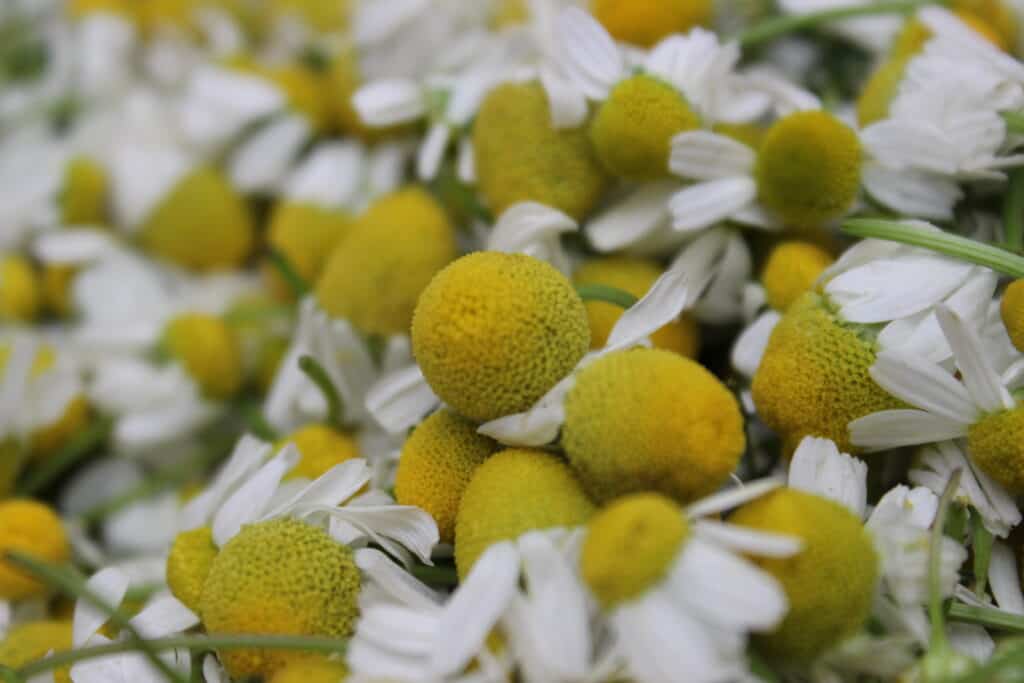
The next layer of this formula includes Fennel seed, Orange peel, and Angelica root. This triplet is quite dynamic, with its slightly bitter and carminative support. These herbs also all have a rich content of volatile essential oils. The carminatives really support digestion in a wide range of ways, typically functioning through a warming, circulatory stimulant property where they’re actually bringing blood flow into the gut.
Many times, they’re also relaxing some tension, constriction or spasm in the digestive system. In this case, we especially see this with Chamomile, and as well as Angelica root and Fennel, but not quite so much with Orange peel; however we are seeing some definite circulatory stimulation, which is excellent. The beauty here is that while our bitters are cooling and drying, our carminatives are typically going to be much more warming, bringing a nice balance to the formula.
We see a little bit of an exception here with Chamomile, as it tends to be more on the cooling side (even though it has essential oils which usually are warming), which is unique because its essential oil are actually cooling in nature, specifically azulene and chamazulene, which are the compounds that give chamomile essential oil that deep cobalt blue color.
So we see Chamomile is cool and dry, Fennel is warm and dry, Orange peel is warm and dry, and Angelica is warm and dry. The other thing that we know with Angelica is that we are going to get a little bit of a relaxant effect, with Chamomile we’re going to get a little bit of a relaxant effect, and we’ll see a little bit of that with Fennel too. The other thing about carminatives is that they’re also really amazing for the liver. This is often overlooked, but if we look at other formulations, like Chinese formulations, we’ll see oftentimes aromatic herbs are put in liver formulas to help to disperse stagnant energy.
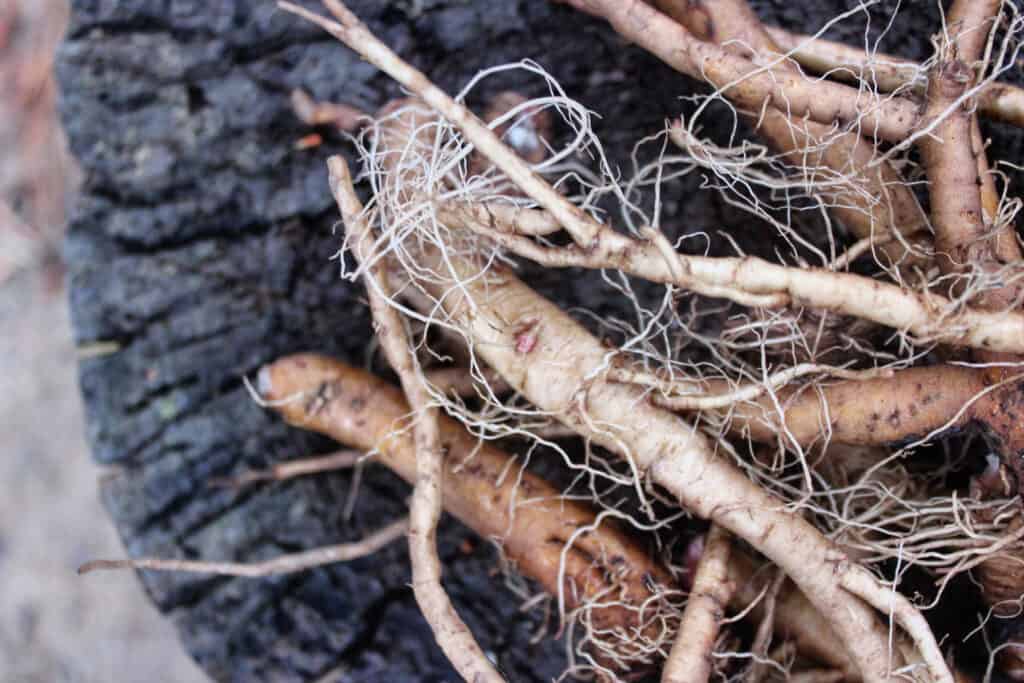
We usually think of bitter herbs for the liver, but carminatives are really effective here too. The way I think of them for the liver is that it’s like the bitters are digging in on a deeper level into the liver. They’re really getting in and promoting detoxification and dredging out the liver; and the carminatives, because they’re aromatic, have this movement to them. They’re helping to disperse that stagnation. The bitters pull it out and the carminatives grab onto them and then help to move that energy. A lot of them tend to be circulatory stimulants, so now they’re moving the blood, so we’re getting more blood flow into the liver, we’re moving the blood to the kidneys, moving the blood to the gut and helping disperse those toxins and stagnation to facilitate in liver detoxification.
Now finally, our last addition to our formula is an important one. If you look at our formula so far, we’ve got three cooling herbs and three warming herbs. That’s pretty nicely constitutionally balanced; but you’ll notice they all are drying herbs. This is really common with herbs, as many of them tend to be drying constitutionally. They’re making you urinate more, sweat more and poop more, and they’re increasing all of these secretions that are ultimately leaving the body in the long-term. Oftentimes a majority of medicinal plants actually tend to have a drying effect on the constitution over a longer period of time. This is critically important to understand from the perspective of vitalist medicine.
A question I get a lot is, “well, hey, how come you’re saying bitters are drying, I thought they increased secretions, right?”. If you’re taking Oregon Grape root and all of a sudden your stomach is secreting these juices and your intestines are secreting all of these juices, then isn’t that moistening up the tissues? The answer is, yes, in the short-term; but in the long-term, those fluids are leaving the body, and whenever fluids leave the body, you are left dryer. This is an important factor when you’re studying medicinal plants, looking at the short-term effect on local tissue versus a long-term effect on the whole constitution. This is a good thing to keep in mind when you’re studying plants, especially if you’re studying different resources and find seemingly conflicting information.
So in order to make this formula more constitutionally balanced, we need to add a moistening herb, and one of my favorites here is Licorice root, which is an amazing plant. I think it’s one of those plants that every herbalist needs in their dispensary. They need to know how to use it, they need to know its versatility, all of its properties and qualities and characteristics, how to use it and especially how to formulate with it. This is an indispensable remedy.
In the digestive system, we see Licorice has a demulcent property, so it adds a soothing and cooling quality to the mucosal membranes. This is one of the major remedies to treat heat and irritation, such as ulcers or heartburn; those hot burning type conditions in the digestive system. What’s really excellent about Licorice in the treatment of ulcers is that not only does it soothe, cool and moisten an inflamed, irritable mucous membrane, but it also has a very broad spectrum antiviral property; thereby helping to treat a helicobactor pylori infection that oftentimes accompanies a gastric ulcer.
Intestinally speaking, it’s very anti-inflammatory. I don’t use that word very often because most herbs aren’t truly anti-inflammatory in the way that we think of prednisone or aspirin or ibuprofen. Those medications are very anti-inflammatory because they are literally turning off the pathway of inflammation higher up in that biochemical cascade.
Most herbs tend to be more inflammation modulating, they’re not necessarily shutting off inflammation, they’re just modulating a healthy inflammatory response; but Licorice is one of those remedies that is actually working higher up on a biochemical cascade of inflammation. It preserves the body’s endogenous levels of cortisol, extending the half-life of our body’s innate anti-inflammatory molecule. It’s very powerful in the way that it reduces inflammation, irritation, really great for hypersensitivities, and immunological hypersensitivity. This is a very applicable remedy for things like leaky gut syndrome, food intolerance, and autoimmune conditions that can be traced back to excessive inflammation in the gut.
So Licorice is really going to tie this formula together by bringing about more of a moistening property and thereby making it much more suitable for a wider range of constitutions.
This leaves us with the question, how much of each herb is in this formula?That’s always the big question, how do you figure out what’s what and how much?
What I like to do is adjust the ratios based on a client’s needs. If someone tends to be more hot, inflamed and irritated in their tissues, or maybe they’re just more hot constitutionally, we might want to increase the amount of cooling herbs. If they’re really cold, maybe we want to increase the warming herbs. If they’re really dry, then we need to make sure we put an adequate amount of Licorice in the formula, or perhaps add other moistening herbs, like Marshmallow (Althea officinalis).
How much you use of each of these herbs really depends on who you’re treating, what you’re treating, and for how long. But the beauty of a formula like this is that it’s just a great all-around support for the digestive system: blood flow, circulation, gastric secretions, intestinal secretions, pancreatic, liver, gallbladder secretions, and amazing to relieve things like constipation, inflammation in the gut, gas, bloating, distension, nausea, and cramping.
There’s a lot of antiseptic properties going on here too. Oregon Grape has antiseptic properties, Licorice has antiseptic properties, Angelica has some antiseptic properties. So even helping to potentially eliminate any possible pathogens present in the gut, this formula would be effective on that level also.
If I was to give a basic rundown of the amounts of the herbs I would want to do in this formula, it would look something like this:
20% Oregon Grape
20% Dandelion
15% Chamomile
15% Angelica
10% Orange peel
10% Fennel
10% Licorice
So we have our lead herbs of Oregon Grape and Dandelion root, as our lead bitter tonic pair; 40% of the formula consisting of those bitters. Chamomile and Angelica at 15%. I bumped Angelica up because it’s the most warming of these plants and Chamomile is the most relaxant of these remedies, so I want a little bit more of that relaxant property in there. Finally, we are tying this all together with support from Fennel, Orange peel and Licorice root.
Typically, I administer a formula like this as a tincture, usually with the starting dosage around 15 to 30 drops before meals up to three or four times a day for just overall general digestive support. Certainly it can be used as a preventative as well.
It’s more ideal to take an herbal formula to optimize your digestive health and get your digestion working really well so that you don’t get digestive symptoms, rather than waiting for the gas or the bloating to come along and then take the herbs to try to correct that expression. I usually suggest people take a formula directly on the tongue, but people can also take it in a little bit of water if needed. A big important part here for these bitters to work optimally, is that we need to taste that bitter taste, which means not diluting it in orange juice or something sweet, but actually just squirting it in the mouth if we can to make this formula work at its best.

The last thing I want to mention about this formula is that it tastes really good. So that’s always a bonus, right!? While I don’t necessarily think that our herbal medicine should always taste like candy, a lot of our formulas don’t really taste good either. Let’s face it, most herbs don’t taste amazing; unless you’re an herbalist who is really interested in herbs… most people may be a little put off at the taste of certain formulations. So, it’s an added bonus when it can be a little easier on the tongue.


